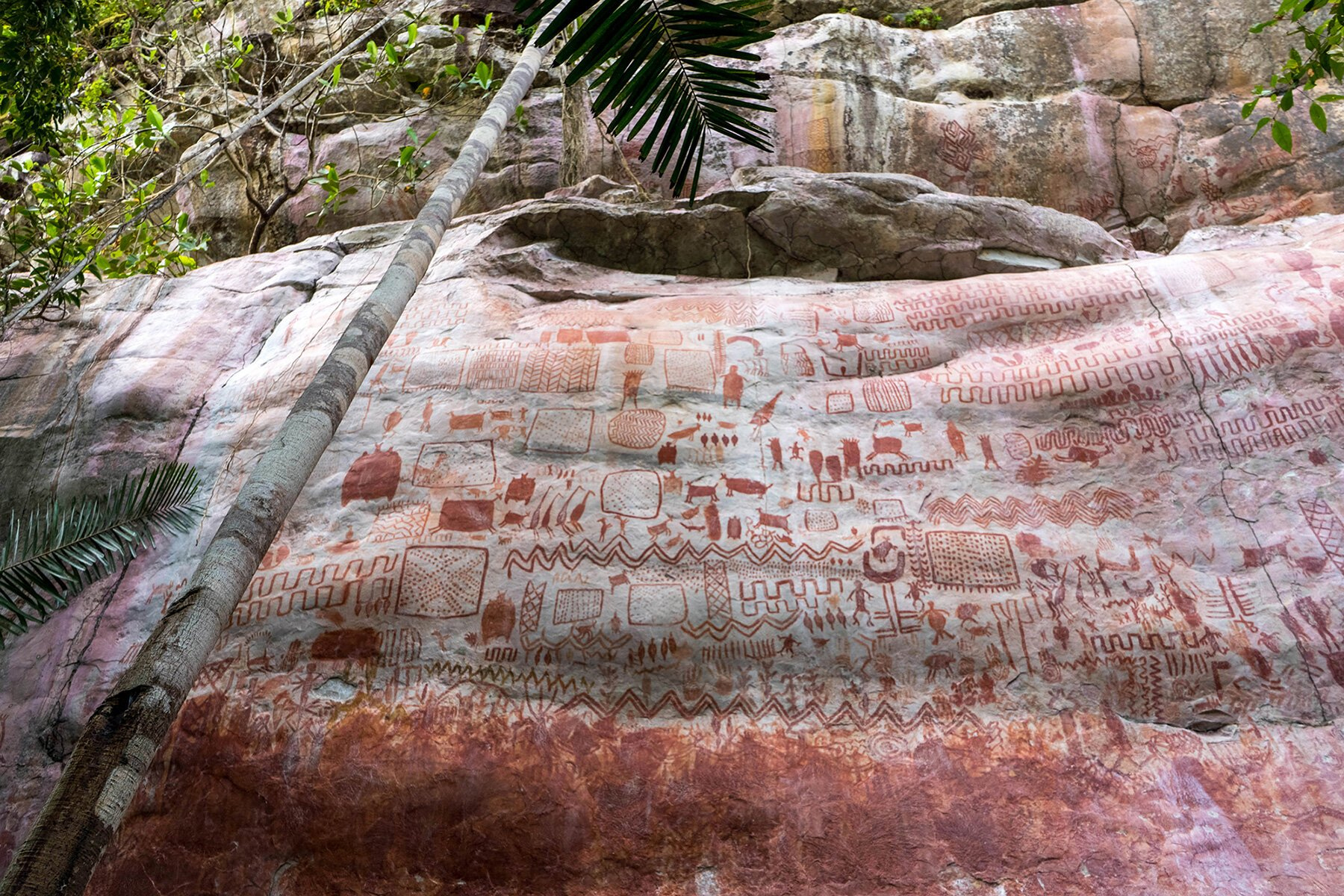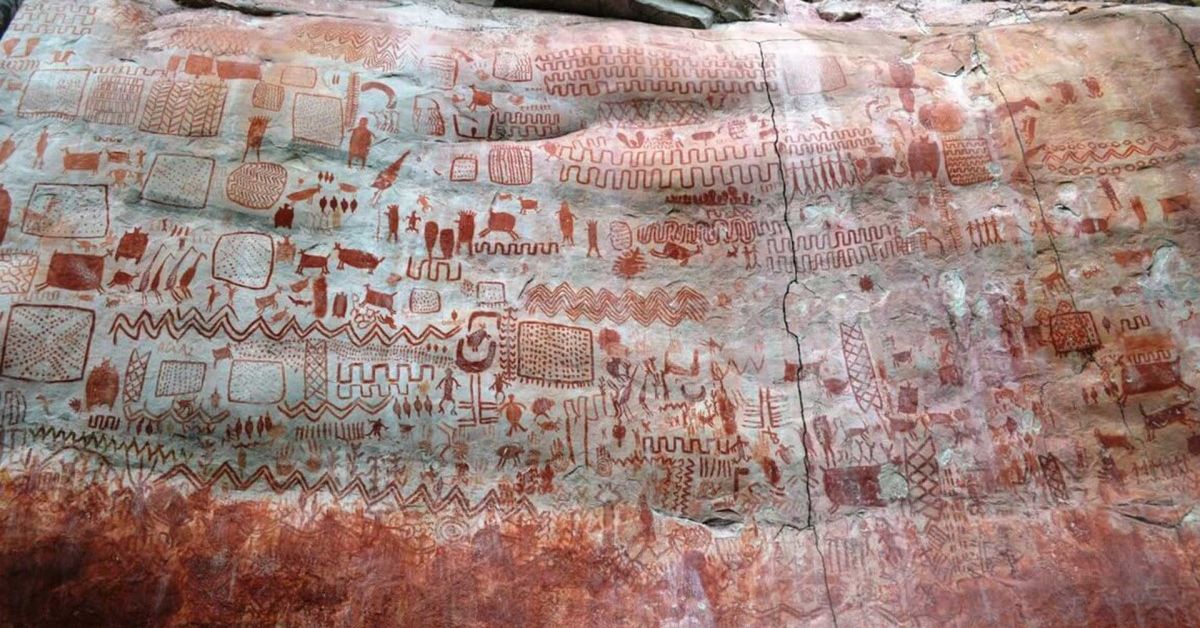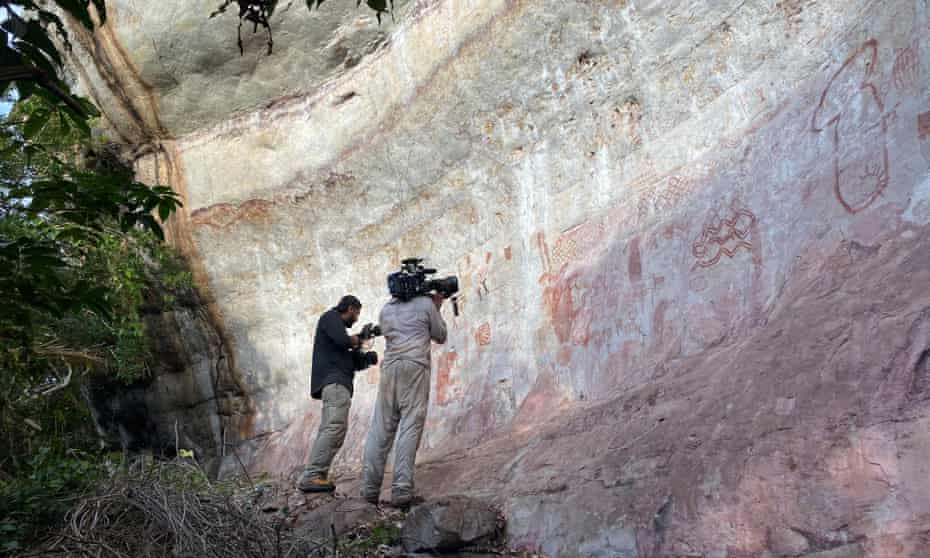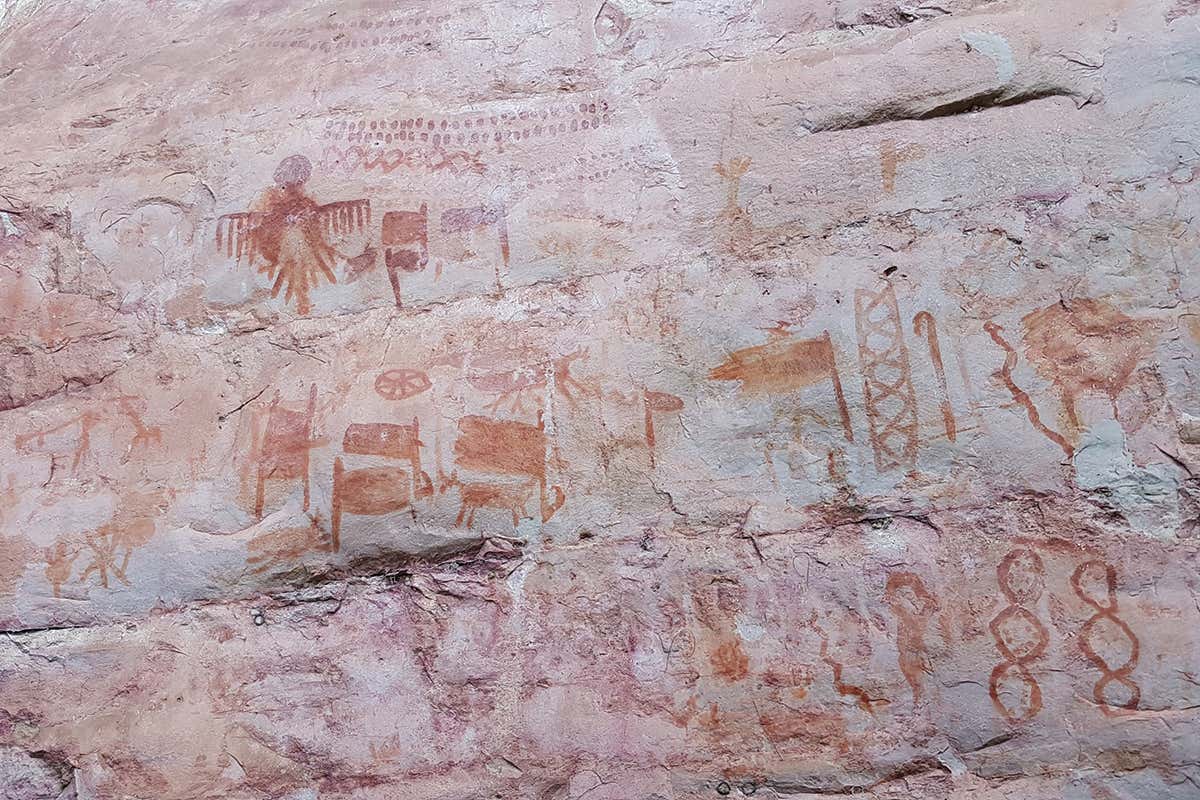Prehistoric Rock Art From the Ice Age

Deep in the Amazon forest of Colombia, in one of its most inaccessible points, the recent discovery of a whopping 12km long series of paintings made the news with worldwide resonance as the finest example of prehistoric rock art from the last Ice Age.
As a matter of fact, the reason behind the sensation is that these petroglyphs date back as far as 12,500 years ago, depicting extinct animals such as mastodons, shovel blades and giant sloths, ice age horses, as well as fish, turtles, lizards, birds, and anthropomorphic figures that seem to dance and hold hands.

The archaeological site, which doesn’t even have a name yet, has been deemed by the experts the “Sistine chapel” of ancient rock art from the last ice age and vividly displays what humans saw in the Magdalenian, the last period of the Upper Paleolithic.
Announcing the incredible find, a British-Colombian team, funded by the European Research Council and led by José Iriarte, professor of archeology at the University of Exeter and one of the leading experts in pre-Columbian Amazon history.
The paintings are incredibly sophisticated even though the rock art dates back to the Ice Age, made mainly in reddish and ocher colors, are so many and refined, precise in the smallest details, that it will take years to study them all in-depth: “They are so detailed that you can even see the horsehair”, declared Iriarte.

One of the anthropomorphic figures wears a mask that resembles a long-beaked bird. There are also many handprints and geometric figures. Many paintings are several meters high and, without suitable scaffolding, they can only be viewed with drones.
“Interestingly, many of these large animals appear surrounded by little men with their arms raised, almost worshiping these animals,” Iriarte said, adding
“One of the most fascinating things was seeing the megafauna of the ice age because it is a sign of the time. I don’t think people realize that the Amazon hasn’t always been this rainforest. A horse or a mastodon could not have lived in a forest, because they’re too big. These paintings not only give us clues about the people who painted them but also what this area could be like, that is, more like a savannah”.

